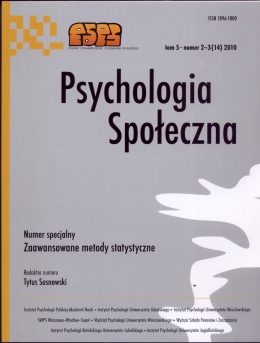Hierarchiczne modele liniowe. Co nam dają i kiedy warto je stosować
Hierarchical linear models. On their advantages and reasons for application
Author(s): Marcin W. Zieliński, Piotr RadkiewiczSubject(s): Psychology
Published by: Wydawnictwo Naukowe Scholar Sp. z o.o.
Keywords: hierarchical linear models; independence of observations; intraclass correlation; random effects model; variance components
Summary/Abstract: Independence of observations is one of the key assumptions underlying regression analysis and other methods based on the general linear model. The assumption of independence of observations is met, when a score on an outcome variable obtained by an individual is not dependent on results of other persons. This article introduces the hierarchical linear modeling (HLM) – statistical method that is recommended, when there is a real chance, that the assumption of observations’ independence is violated. The structure of our article is threefold. In the first part we present basic methodological reasons for applying HLM method, stressing its advantages in comparison to the traditional regression analysis based on the ordinary least squares estimation. The second part introduces the most important theoretical notions underlying hierarchical models – a division into fixed and random effects, a multilevel data structure (including cross-level interaction), and a specific approach to variance components. In the third part we show two empirical examples of HLM application, including a detailed interpretation of their results.
Journal: Psychologia Społeczna
- Issue Year: V/2010
- Issue No: 14
- Page Range: 217-233
- Page Count: 17
- Language: Polish

